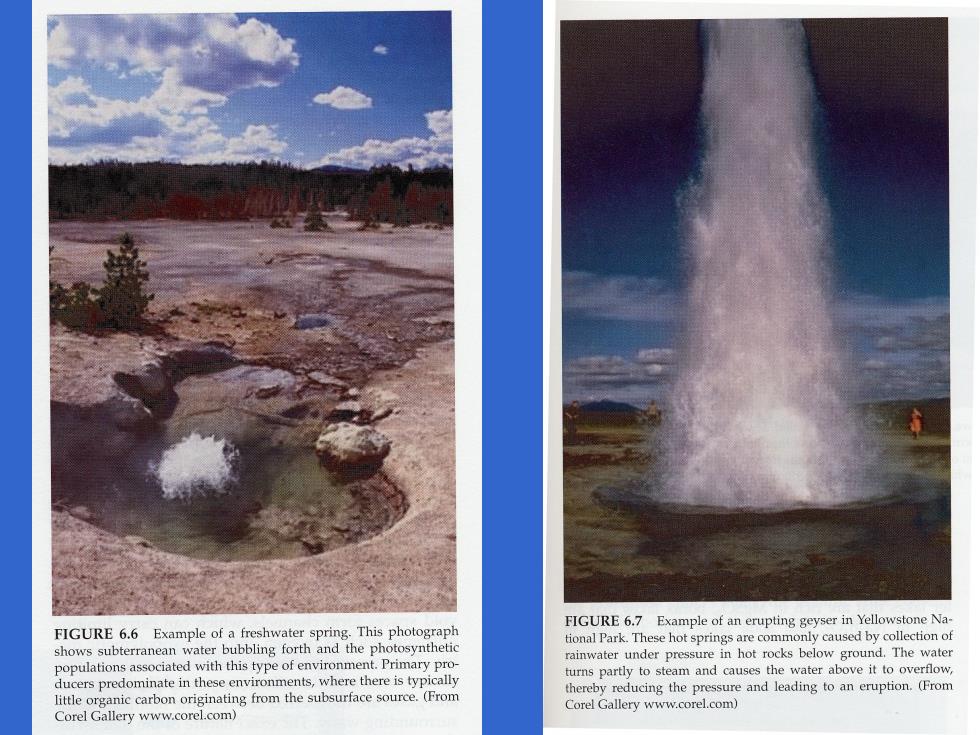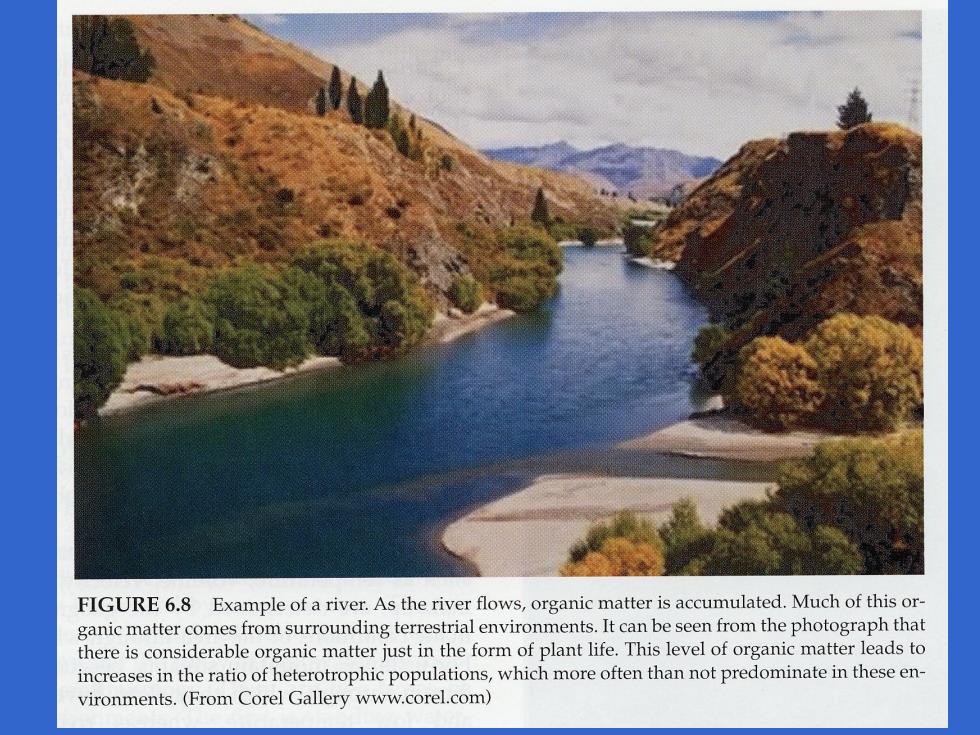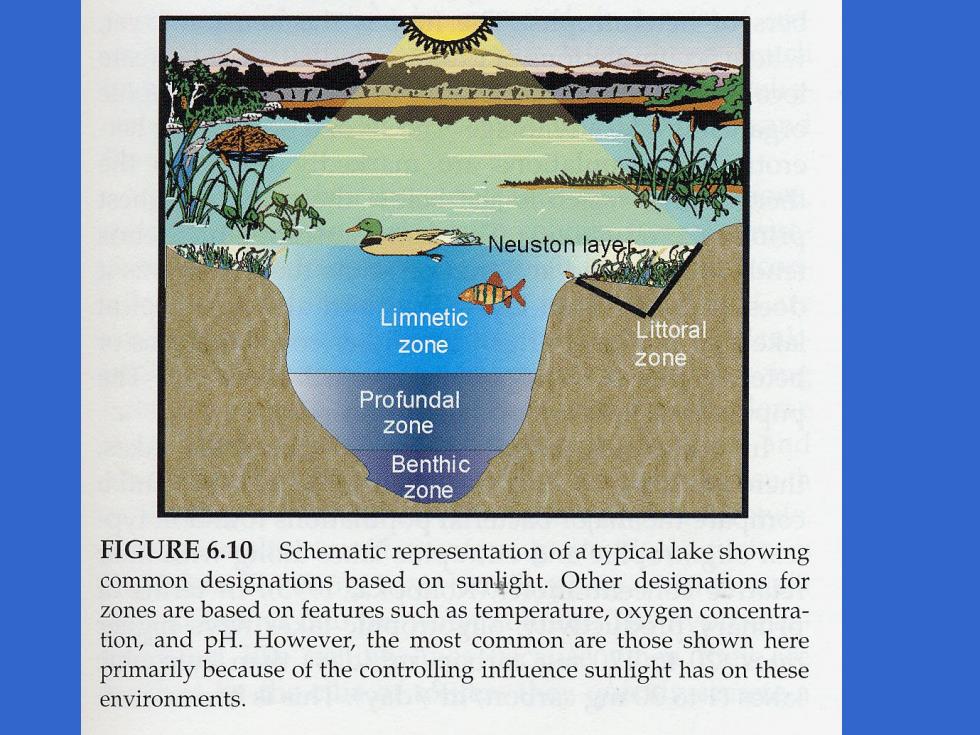
(三)水中微生物的种类、数量和分布 大气水一来自于空气中的微生物 。 ·地面水 聚积水 江河湖泊、池塘、水库等 ·地下水
(三)水中微生物的种类、数量和分布 • 大气水——来自于空气中的微生物 • 地面水 • 聚积水——江河湖泊、池塘、水库等 • 地下水

FIGURE 6.7 Example of an erupting geyser in Yellowstone Na- FIGURE 6.6 Example of a freshwater spring.This photograph tional Park.These hot springs are commonly caused by collection of shows subterranean water bubbling forth and the photosynthetic rainwater under pressure in hot rocks below ground.The water populations associated with this type of environment.Primary pro- turns partly to steam and causes the water above it to overflow, ducers predominate in these environments,where there is typically thereby reducing the pressure and leading to an eruption.(From ittle organic carbon originating from the subsurface source.(From Corel Gallery www.corel.com) Corel Gallery www.corel.com)

FIGURE 6.8 Example of a river.As the river flows,organic matter is accumulated.Much of this or- ganic matter comes from surrounding terrestrial environments.It can be seen from the photograph that there is considerable organic matter just in the form of plant life.This level of organic matter leads to increases in the ratio of heterotrophic populations,which more often than not predominate in these en- vironments.(From Corel Gallery www.corel.com)

FIGURE 6.9 Example of a typical oligotrophic lake.Lakes are very dynamic aquatic environments with extensive phototrophic and heterotrophic populations with equally dynamic interactions. Whether the phototrophic or heterotrophic populations predomi- nate depends on environmental factors.(From Corel Gallery www.corel.com)

Neuston lay k Limnetic Littora zone zone Profundal zone Benthic zone FIGURE 6.10 Schematic representation of a typical lake showing common designations based on sunlight.Other designations for zones are based on features such as temperature,oxygen concentra- tion,and pH.However,the most common are those shown here primarily because of the controlling influence sunlight has on these environments